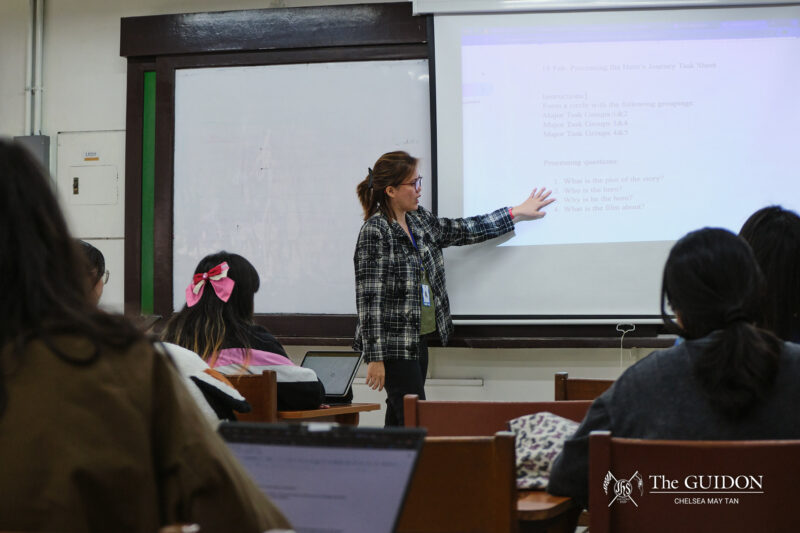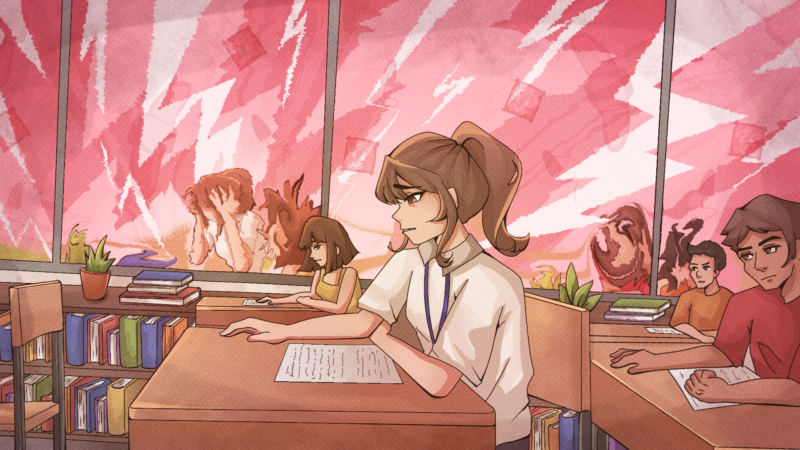College students usually resort to the Loyola Schools Infirmary (now the Loyola Schools Office of Health Services) whenever they get sick in school. While the seniors were having their medical-check up for the Theology immersion, Nicole* went to the infirmary because of a stomachache. The doctors and nurses present at the time, however, told her not to go inside because it was their lunch break.
“I told them that my stomach really hurt,” she says. “[For me], that means I can’t go back at another time.”
Though she was eventually given the medicine she needed, the said staff didn’t advise her how or when she should take it. “Even when they know that you’re in pain or feeling discomfort because of a particular illness, they really won’t open the door for you.”
“And when they do, they address you as if you’re such an inconvenience.”
More than just acute care
The Loyola Schools Office of Health Services (LSHS) identifies itself as “a service-oriented office that contributes to the Loyola [Schools’] vision of being a Filipino, Catholic, and Jesuit center of excellence for higher learning.” It currently has equipment similar to that of a family clinic, which among others, includes basic life support. It also requires that two nurses and at least one doctor be present at any given time. The clinic is open from 7:00 am to 7:00 pm on weekdays and 8:00 am to 4:00 pm on Saturdays, supposedly without any lunch breaks.
According to LSHS Director and Leaders for Health Program Director Dr. Raymundo Baquiran, the administration restructured the Loyola Schools Infirmary into the current LSHS to cater to more sectors of the Ateneo community. “The reorganization into an Office of Health Services actually expands the role and the mission of the school infirmary to just providing acute care,” he says.
Its formal run as LSHS began last June 2008.
Unlike its former office, which was then under the Office of Administrative Services, LSHS is now a separate office that directly reports to the Vice-President of the Loyola Schools (VPLS). This is brought about by a VPLS-commissioned review in 2007 on the infirmary, which reveals that “assistance for acute care” is its only purpose.
“We would like to be more proactive, because the infirmary service was more of a reactive service – students come to you because they need help and we respond,” says Baquiran. “By being proactive, we would like to be able to start preventive health education programs.”
To further better its performance, LSHS plans to have a students’ database from which it can base its medical services. Says Baquiran, this database will come from the students’ medical records and the Ateneo College Students’ Survey. It will also come from the revised health forms that next year’s freshmen will have to answer.
Paging the doctor
According to Baquiran, walk-in cases require that nurses check the patients’ vital signs, such as their blood pressure, heart rate, temperature, height, and weight. After doing so, the nurse or the physician will determine whether the student or teacher concerned has to have further consultation.
Medicine for hyperacidity, headaches, and the like are also made available to the community. In cases where an Atenean only needs to get any of the said medicine, the staff still assesses whether it’s necessary to be taken.
This isn’t the case, however, for some students.
Nicole, who had her stomach pains treated during LSHS’ transition period last year, says that, when she left the infirmary, she didn’t know what the pain was and what might have caused it. “Later on, I had to go back to the infirmary because [the pain] was still there,” she says. “And when I came back and it wasn’t their lunch break, the doctor wasn’t there.”
Mars de Torres (IV BS LM), however, has no qualms about the infirmary’s staff. Before its restructuring, de Torres had to go there after fainting while singing with the Ateneo College Ministry Group (ACMG) during the Mass of the Holy Spirit two years ago.
“I was already suffering from painful migraines and severe asthma that week,” she says. “I neglected to take my [medicine] and did not eat breakfast because I was in a hurry to make it to practice before the mass.”
“By mid-mass, I was already feeling dizzy. I lost consciousness.”
She was rushed to the infirmary and was injected with intravenous fluids. Along with the Campus Ministry Office staff and her ACMG adviser, the infirmary staff did their best to calm her while calling for an ambulance to fetch her.
“[The infirmary staff is] generally accommodating to [the] students…When they know you’re there to get treated for something, they’ll make time for you.”
De Torres, thinks, however, that the infirmary should have its own ambulance. In her case, she found it difficult while having to wait for the vehicle to arrive. “In situations where the infirmary can only provide immediate medical attention while the patient evidently needs more than [this], an ambulance becomes necessary.”
New office, old problems?
Another concern is the lack of a sophisticated health care system in the Philippines that the LSHS can follow. According to Baquiran, although there is a Commission on Higher Education policy on having and maintaining a school infirmary, it doesn’t specify what equipment it should have or how it should even be operated.
Unlike in other countries, particularly the United States, Baquiran says that the country still lacks a health care accreditation body that can strictly enforce standards on health facilities.
Although it has the Philippine Health Insurance Corporation, its jurisdiction only covers hospitals. Small outpatient clinics, like those in schools and universities, are not covered and, thus, have no means of being accredited. In LSHS’ case, it complies with the generally accepted set-up for clinics, such as having the said life support.
Strengthening links
Baquiran acknowledges that much still needs to be improved with LSHS. He says, however, that, hopefully, LSHS’ current system would be efficient enough to go beyond its acute-care purpose and, thus influence clinics of other schools to do the same.
“The structure always serves the function,” he says in a mix of Filipino and English. “Whatever it is that you want to do, you have to complement it with the appropriate staffing to be able to do [so].”
To do this, LSHS is trying to work with other LS units, such as the college Guidance Office. While the two are still definitely distinct, Baquiran says that coordination between them is much more fluid and close. Offices such as the Associate Dean for Student Affairs, as well as the Associate Dean for Academic Affairs, are also involved in the coordination process, especially in crisis situations regarding mental health.
“We want to move beyond the acute care and be more engaged in health concerns and health matters. That’s on the top of the priority.”
* Name has been changed to protect the individual






